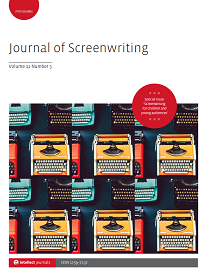
Full text loading...

This article explores the challenges and emerging understandings around crafting the narrative position of the participant in real-time virtual reality (VR). Drawing on interviews with contemporary VR creators working in the United Kingdom, America, Canada and Australia, the article explores the ways in which creators conceptualize the narrative space occupied by an interactive VR participant. It argues that contemporary creators are utilizing the narrative capacity of the participant in ways that challenge traditional notions of characterization and protagonist. Instead, creators engage methods and ideas that are more aligned with the notion of ‘postdramatic’ theatre. I propose that the concept of negative space can be used to explain the relationship between the active participant and authored VR work. Conceiving the space occupied by the embodied participant in terms of ‘negative space’ within the authored environment can allow screenwriters and VR creators to ‘write around’ this absent (but present) participant during the development process.

Article metrics loading...

Full text loading...
References


Publication Date:
https://doi.org/10.1386/josc_00134_1 Published content will be available immediately after check-out or when it is released in case of a pre-order. Please make sure to be logged in to see all available purchase options.